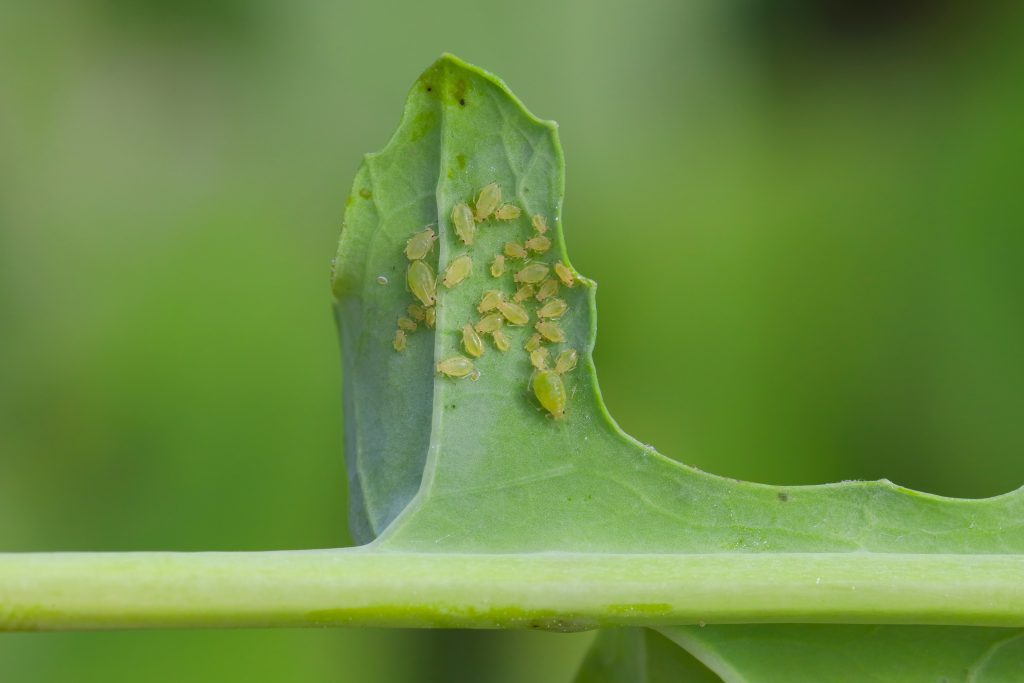How to Get Rid of the Green Peach Aphid
How to Get Rid of the Green Peach Aphid
If your produce is suddenly dying without an apparent cause, your home garden might be under attack by the small-but-mighty green peach aphid. These are the most common aphid species and can be present in your garden throughout the year.
So, what does this mean for your crops?
The green peach aphid threatens cucumbers, peppers, tomatoes, eggplants, and other flowers. This species is also a carrier of over 100 plant-infecting viruses and is skilled at causing substantial damage to home-grown produce.
At Vulcan Termite and Pest Control, we take pride in being one of Alabama’s longest-running, family-owned pest control companies. Read on to learn more about identifying the green peach aphid, the damage associated with an outbreak, and our pest pros’ advice on what you can do about it.
Getting to Know the Green Peach Aphid
The green peach aphid community travels in colonies, so when there’s one, there are many. There are a few ways to classify green peach aphid bugs; they may be born with or without wings, depending on the colony’s size and whether it has outgrown its host plant. Their resilient and adaptive nature makes them a destructive garden guest.
This particular aphid species is found throughout the year but can most commonly be seen from March to May and September to November. It is oval-shaped and ranges in color from gray to dark green or even pink. The color palette of the green peach aphid is influenced by the season, not its name alone. During the cooler seasons, the green aphid adopts its deepest shade of green; in the warmer months, it gets lighter.
Signs of an Outbreak
If your plant’s youngest leaves are yellowing and curling downward, the green peach aphid might have already launched its attack. There are a few visible signs that indicate an outbreak.
Plants Have Allergies and Viruses Too
Green peach aphid colonies typically live along the youngest leaves of a plant. As they eat away at your plant’s leaves, they leave behind a toxin that causes an allergic reaction within the plant. This isn’t the only harmful substance they leave behind (see “Honeydew Fungi”).
Much like other pests, green peach aphids also harbor viruses that can hinder the growth and vitality of your crops.
Honeydew Fungi
Don’t let the name “Honeydew Fungi” fool you—it’s not sweet like the honeydew melon you can buy at the grocery store.
Sap from leaves is a primary nutritional source for aphids. While aphids are siphoning sap, they leave secretions of “honeydew”—a sticky waste product from the sap—on the leaves; this syrupy substance is conducive to fungal growth. The resulting growth is honeydew fungi, a black powdery fungus that feeds on the honeydew.
As the honeydew fungus takes over your plant, it prevents photosynthesis from occurring and can ultimately lead to its death.
Addressing Signs of Green Peach Aphids
If you already see these signs in your garden, it’s probably too late to prevent a green peach aphid problem.
Still, take heart; you might still have time to save your garden. However, once these little green sap-suckers have infested your plants, getting rid of them isn’t easy, and you need to intervene quickly. You can skip the race, though; that’s what our trained technicians are here for!
Our custom pest control service plans ensure your crops stay in good shape throughout every season!
Hire Birmingham’s Best Garden Pest Experts Today!
At Vulcan Termite & Pest Control Inc., we offer many reliable options and treatment methods for aphid outbreaks. When caring for gardens intended for consumption, our top priority is the safety of our customers and their families.
Our trusted technicians practice safely using pest control chemicals near edible plants, protecting your family’s fresh garden produce until harvest time!
With over 50 years of experience providing yard pest control services, we’ll always have a solution for you. Call us at (205)-663-4200 or contact us online today!


